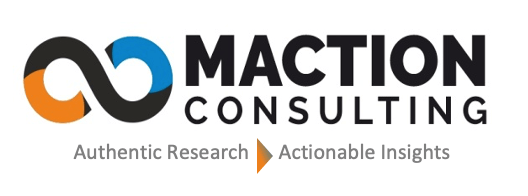In today’s rapidly evolving business landscape, staying ahead of the curve is no longer a luxury, but a necessity. To thrive, organizations must be able to anticipate market shifts, identify emerging opportunities, and mitigate potential risks. This is where the power of predictive analytics, amplified by artificial intelligence (AI), comes into play.
Predictive analytics utilizes historical data, statistical algorithms, and machine learning techniques to forecast future events or trends. By analyzing vast datasets, businesses can gain valuable insights into customer behavior, market demand, and competitive landscapes. This empowers them to make data-driven decisions, optimize operations, and ultimately achieve a competitive advantage.
The Role of AI in Predictive Analytics
AI plays a crucial role in enhancing the capabilities of predictive analytics. Machine learning algorithms, a subset of AI, enable systems to learn from data, identify patterns, and make predictions without explicit programming. This allows businesses to:
- Process vast amounts of data: AI algorithms can efficiently analyze massive datasets, including structured and unstructured data, that would be impossible for humans to process manually.
- Uncover hidden patterns and relationships: By identifying complex patterns and correlations within data, AI can uncover insights that might be missed by human analysts.
- Improve accuracy and precision: Machine learning models can continuously learn and adapt, improving the accuracy of predictions over time.
- Enable real-time analysis: AI-powered systems can analyze data in real-time, providing businesses with up-to-the-minute insights into market trends and customer behavior.
Key Predictive Modeling Techniques
Several predictive modeling techniques are commonly used in market trend forecasting:
- Time Series Analysis: This technique analyzes historical data points to identify patterns and trends over time. It is particularly useful for forecasting sales, demand, and other time-dependent variables.
- Regression Analysis: This statistical method examines the relationship between a dependent variable (e.g., sales) and one or more independent variables (e.g., price, marketing spend). It helps to understand how changes in independent variables impact the dependent variable.
- Machine Learning Algorithms: A wide range of machine learning algorithms, including decision trees, support vector machines, and neural networks, can be used for predictive modeling. These algorithms can identify complex patterns and relationships within data, leading to more accurate forecasts.
Case Studies
- Netflix:
Netflix, the global streaming giant, leverages AI-powered predictive analytics to personalize recommendations for its users. By analyzing viewing history, ratings, and other data points, Netflix’s algorithms predict which shows and movies users are most likely to enjoy. This personalized approach has significantly increased user engagement and retention.
- Amazon:
Amazon utilizes predictive analytics to optimize its supply chain and inventory management. By analyzing historical sales data, demand forecasts, and external factors like weather patterns, Amazon can predict future demand for products. This enables them to optimize inventory levels, reduce stockouts, and minimize costs.
Benefits of Predictive Analytics in Market Trend Forecasting
- Improved Decision Making: By providing accurate forecasts, predictive analytics empowers businesses to make informed decisions about product development, marketing strategies, and resource allocation.
- Enhanced Competitiveness: By anticipating market shifts and identifying emerging opportunities, businesses can gain a competitive edge over rivals.
- Reduced Risks: By identifying potential risks and mitigating them proactively, businesses can minimize losses and ensure business continuity.
- Increased Efficiency: By automating data analysis and forecasting processes, businesses can free up valuable time and resources for other strategic initiatives.
- Improved Customer Experience: By understanding customer preferences and behavior, businesses can deliver personalized experiences that enhance customer satisfaction and loyalty.
Conclusion
Predictive analytics, powered by AI, is transforming the way businesses forecast market trends. By leveraging the power of machine learning and advanced analytical techniques, organizations can gain valuable insights into market dynamics, make data-driven decisions, and achieve sustainable growth. As AI technologies continue to evolve, we can expect even more sophisticated and impactful applications of predictive analytics in the years to come.


